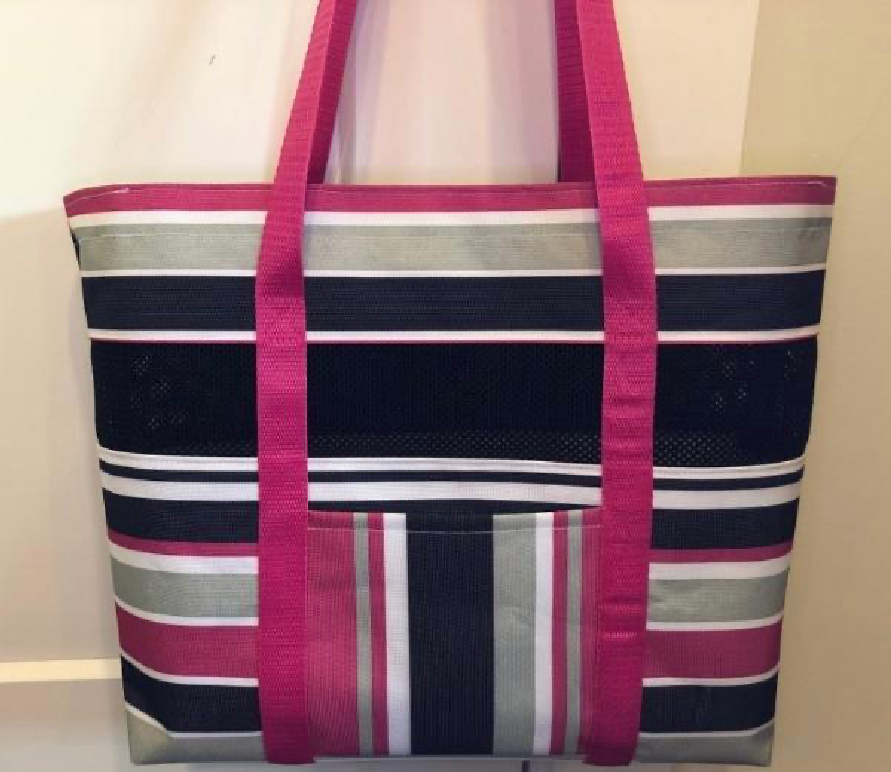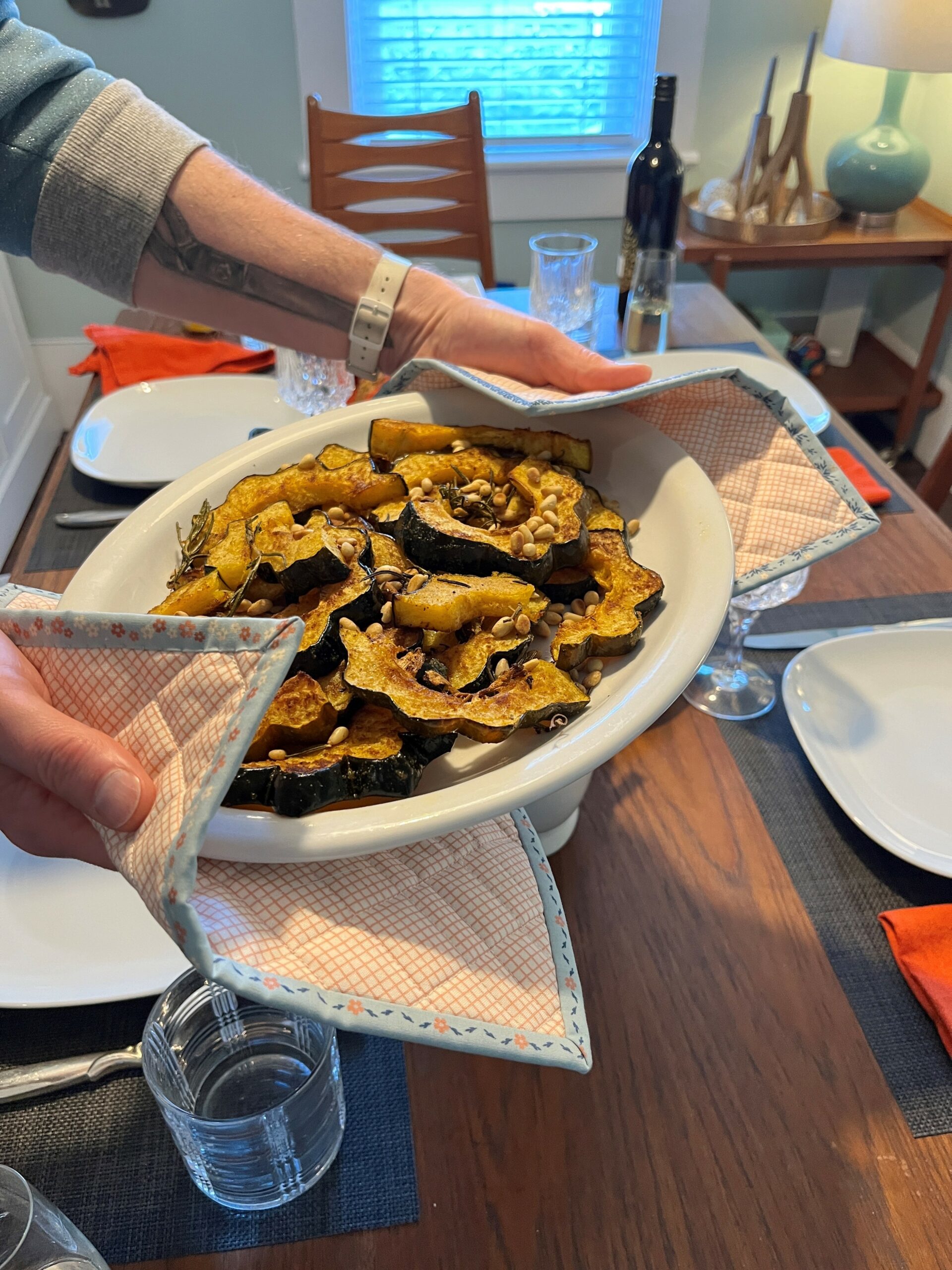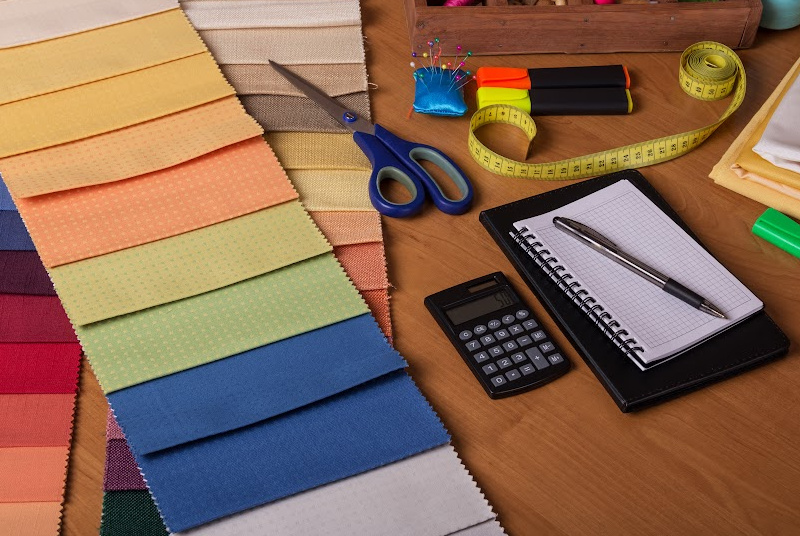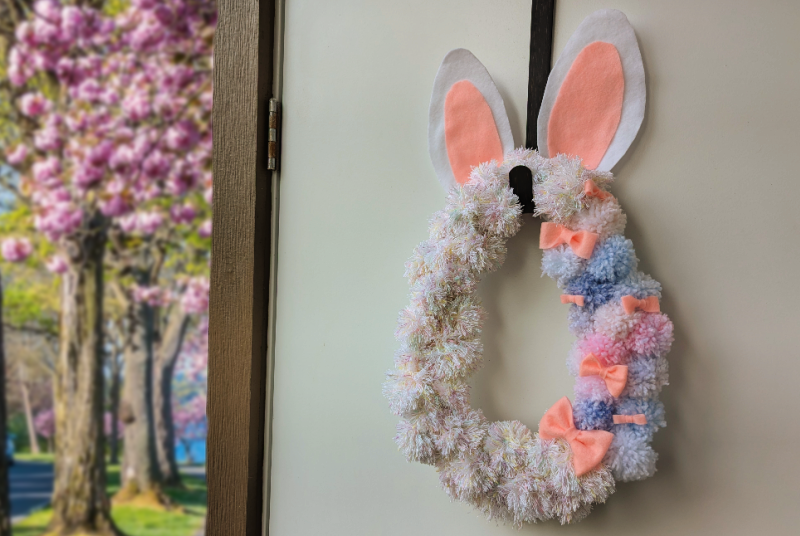Too cute! The Mini Colleen tote is fairly similar to our “Colleen: Large mesh window tote” but uses less fabric, has an extra pocket and includes an infinity handle! Maybe you just have less stuff to carry around, or you’re looking to use up some scrap fabric–either way, the Mini Colleen tote is perfect for a casual day at the beach or that last minute grab and go shopping trip.
Try 1 of our other 2 tote bag styles and either make a bigger version of this tote, or a drawstring bag!
The Colleen: Large mesh window tote
The Janice: Drawstring and self-lined tote
The Mini Colleen: Small mesh window tote (read below!)
You can mix and match the techniques for any of these bags together too! Maybe you want to line your mesh tote, or maybe you want the extra pockets from the small mesh tote tutorial. Either way, each bag is slightly different and puts a unique spin on these basic sewing techniques from our “Colleen: Large mesh window tote” tutorial. Read on, and sew on!
Materials
(You will have enough materials to create 2 bags)
- 1/4 yard of heavy mesh
- ½ yard of canvas (most nylon fabrics are water repellent and don’t require lining)
- 3 yards of nylon or cotton webbing (1” or 1 ½” wide) for straps
- Tailors chalk or fabric marking pen
- Sewing clips (instead of straight pins)
- Matching or contrasting thread
- Jean machine needles
- Painter’s tape (optional)
Instructions
Step 1. Cut fabric as follows
Canvas: 1 piece 19” x 19” (Pattern piece “C”) for the base of the bag.
2 pieces 5” x 19” (Pattern piece “A1” and “A2”) top of bag.
2 pieces 6 ½” x 6 ½” (Pattern piece “D1” and “D2”) for pockets.
Mesh: 2 pieces 3 ½” x 19” (Pattern piece “B1” and “B2”) for the middle of the bag.
Webbing straps – 3 yards for the handles.
Step 2. Find the placement for your straps by marking the midpoint on both 19” sides of pattern piece C with tailors chalk. Measure 3” from your midpoint and mark.
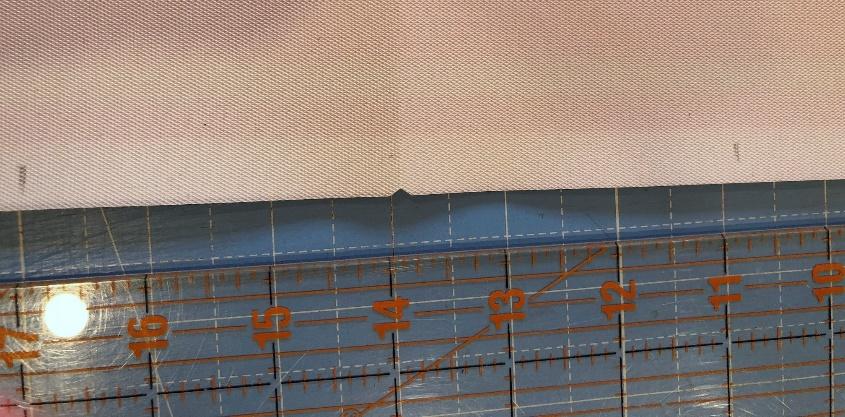

Step 3. Follow step 3-6, but add a pocket on both side panels over pattern piece “C” the top/opening of your pocket will be along the B / C seam.
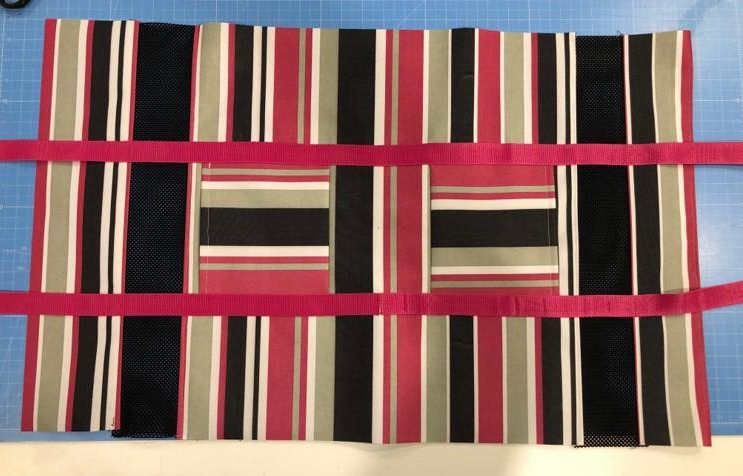
Step 3. Sew together the pieces of the main body of the tote with a straight stitch in the following order A1, B1, C, B2, A2, using a ½” seam allowances along the 19” side of the pattern pieces. Make sure to sew with right sides together. Note: your webbing should be caught in the seam allowance between both B and C pattern pieces. This seam will replace the need for your handles to be basted. The end result should create one large rectangle that alternates between canvas and mesh.
Step 4. Fold your length of webbing in half and mark your halfway point (a safety pin would work). Then at one end of your webbing fold back 1” and hem in place. The webbing end with the raw edge will start on one side of the bottom of your bag to create the handles. Creating an infinite loop, pin the hemmed end of your webbing overtop of the raw edge of the other end of the webbing to hide it. Place the inside edge of the webbing against the marks you made previously. Baste the webbing in place, lining up the halfway point (the safety pin) opposite the spot where your webbing stops and starts, creating 2 loops at the top of your bag for handles that are the same length. Your handles will be 6” apart and should be on either side at the top of your bag.
Step 5. Stitch down both sides of the webbing, pivoting at the A / B seam to stitch across the top. This way the straps will be secured on the mesh, but still loose at the top of the bag to create a handle. The inside edge of your webbing should catch the edge of your pocket to secure it in place.
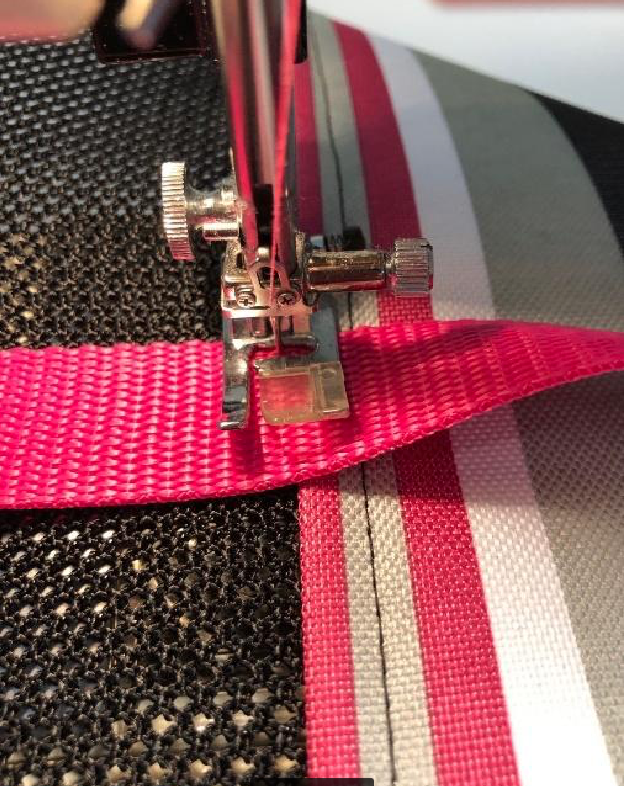
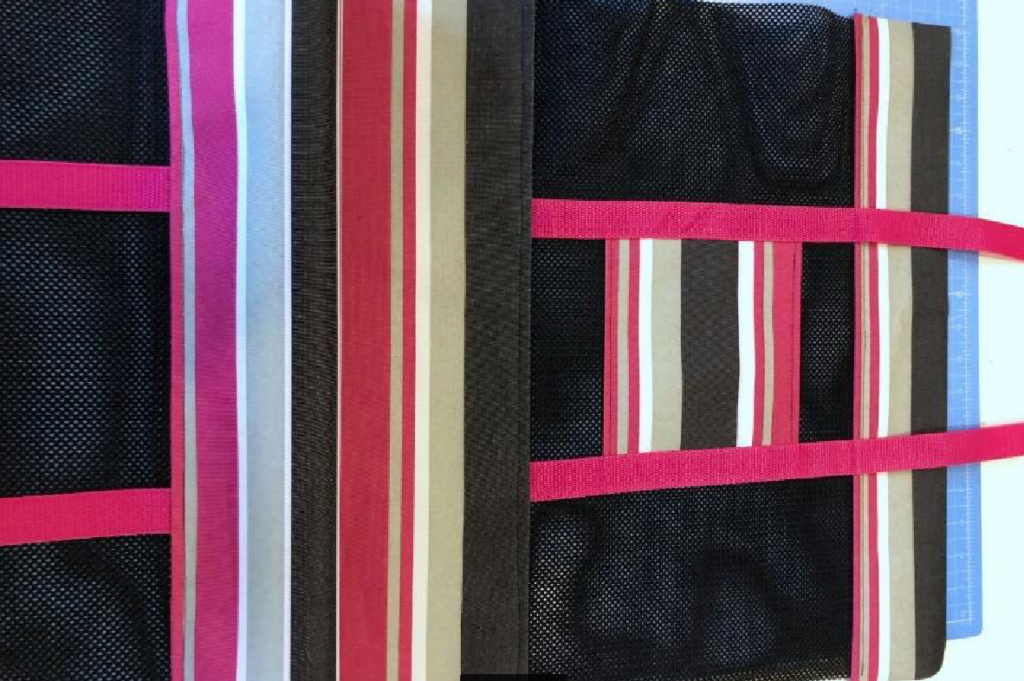
Step 6. Now to secure the sides! Fold the bag in half with right sides together lining up both top edges. Use clips to hold the edges in place and sew down both sides.

Step 7. Draw a 2” box at the bottom of the bag, measuring in from the seam allowance at the sides. This is the corner of your bag and how your bag will keep its shape. Marking the box on both sides of the bag will make it easier to stitch.
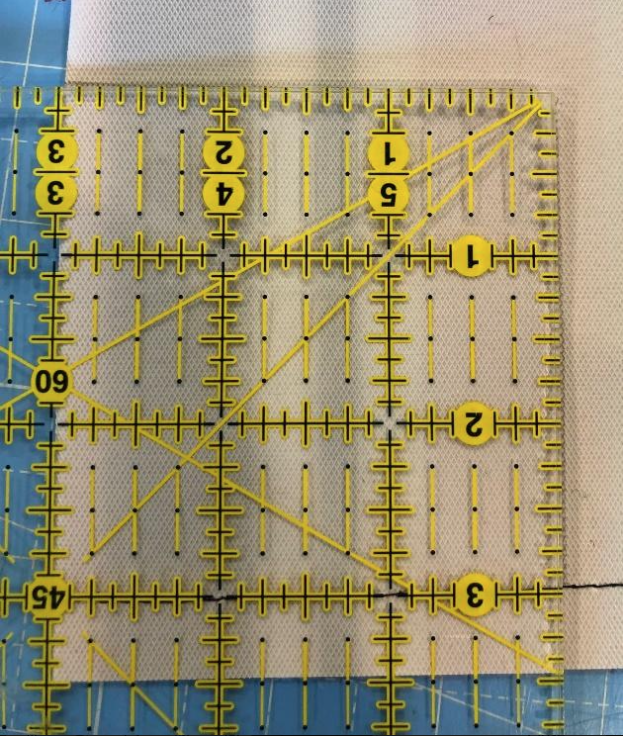
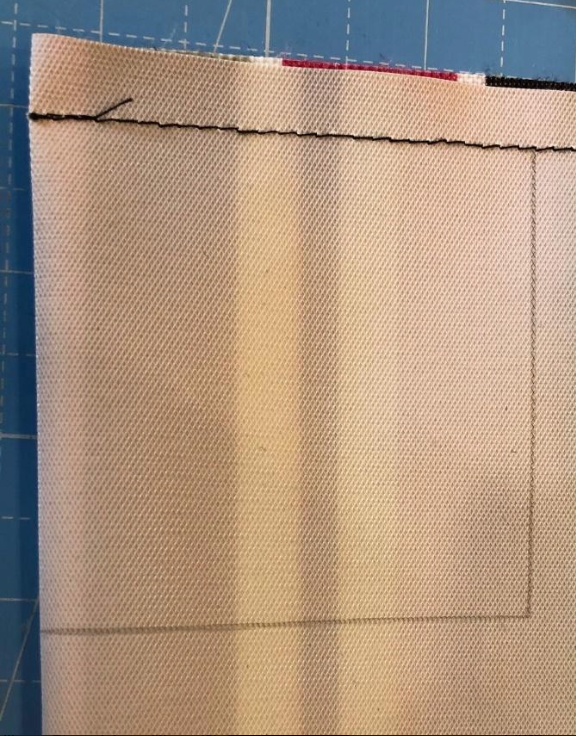
Step 8. Fold the side seam so that it lines up with the bottom of the bag, using the box you drew as reference. You will now have what looks like a triangle. Hold it in place with clips and sew along the marked line. You can choose to trim the triangles, or leave them in place.
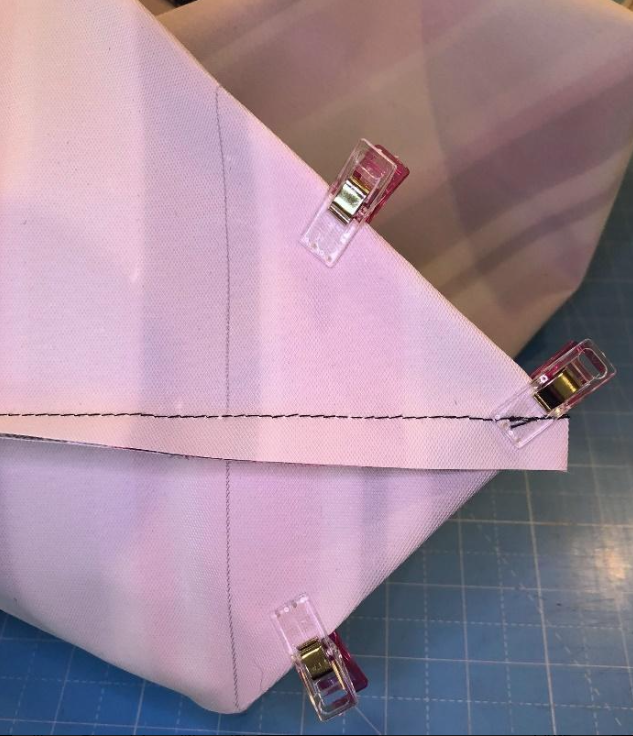
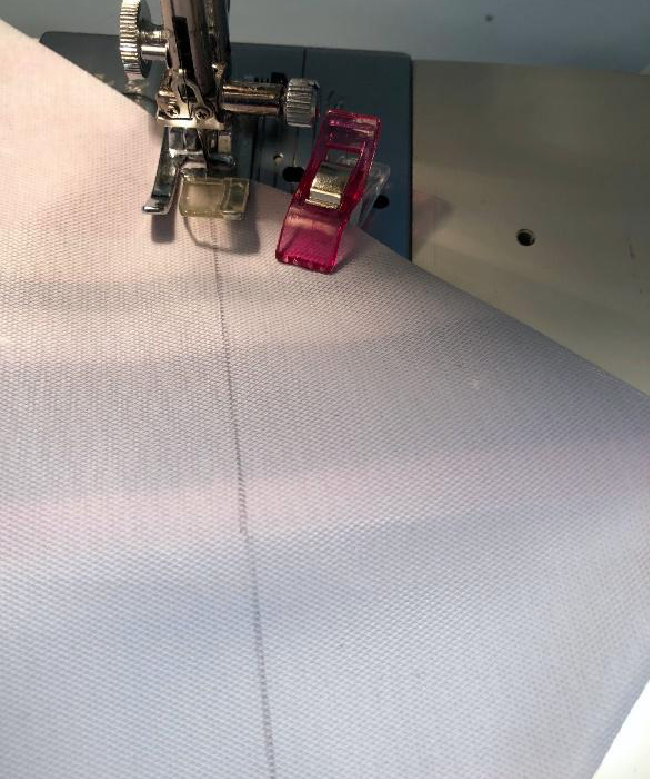
Step 9. Turn the top edge of the bag down 1” and sew in place, keeping the webbing out of the way.
Step 10. Turn your bag right side out. And there you have it!
We hope you enjoyed this tutorial on making this awesome tote! It was put together by our staff member Colleen (assisted by Janice) and will be in-store on display in Coquitlam for a short time. These techniques are timeless though and perfect for any style tote you could make in the future. If you enjoyed this tutorial or want to see others like it, let us know in the comments!
